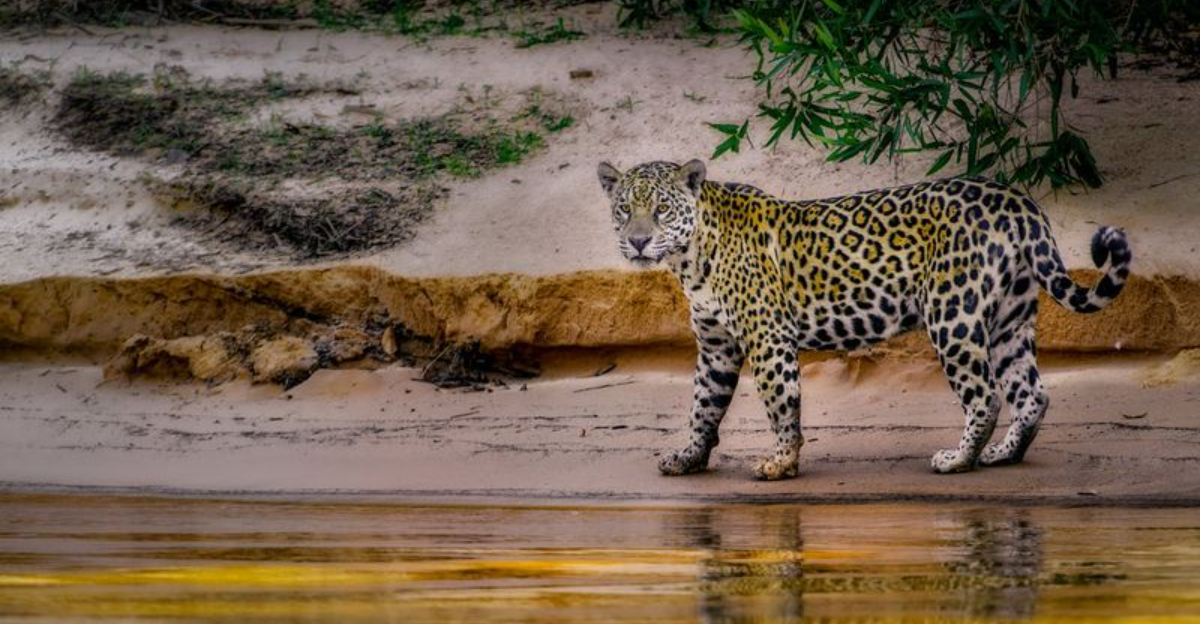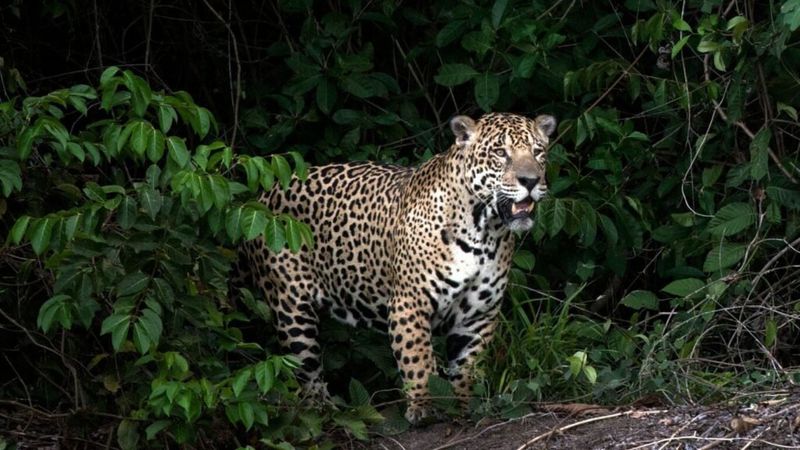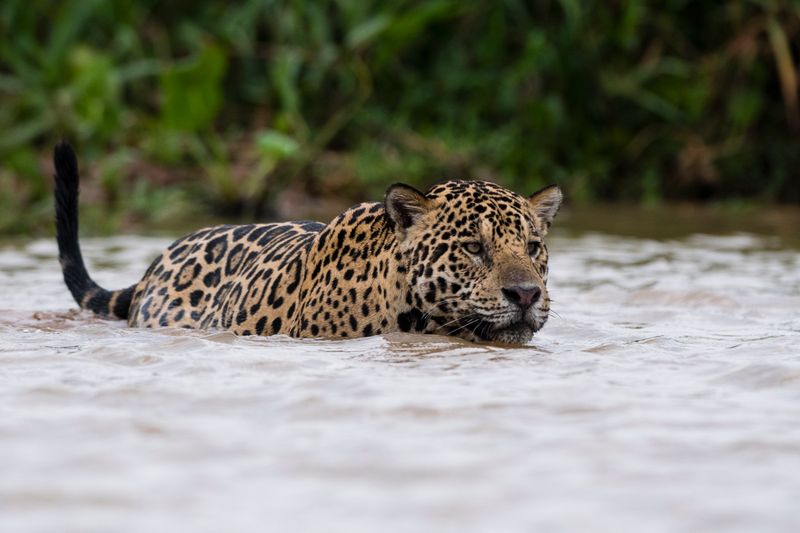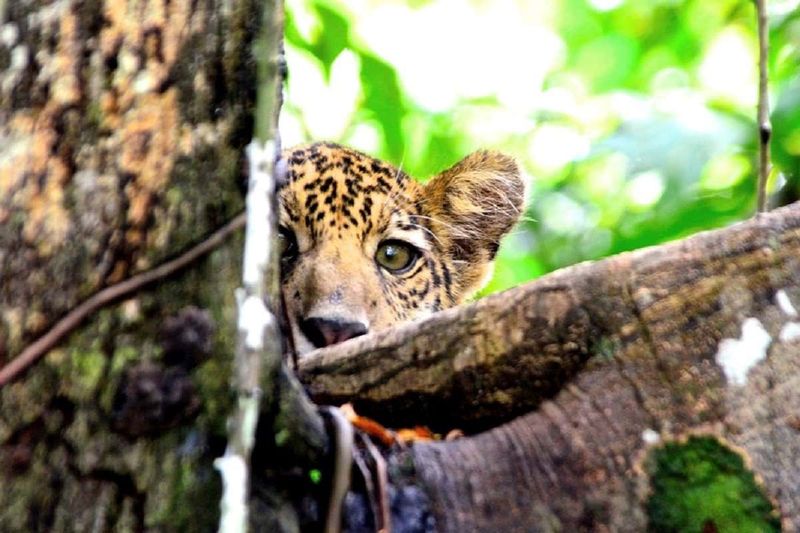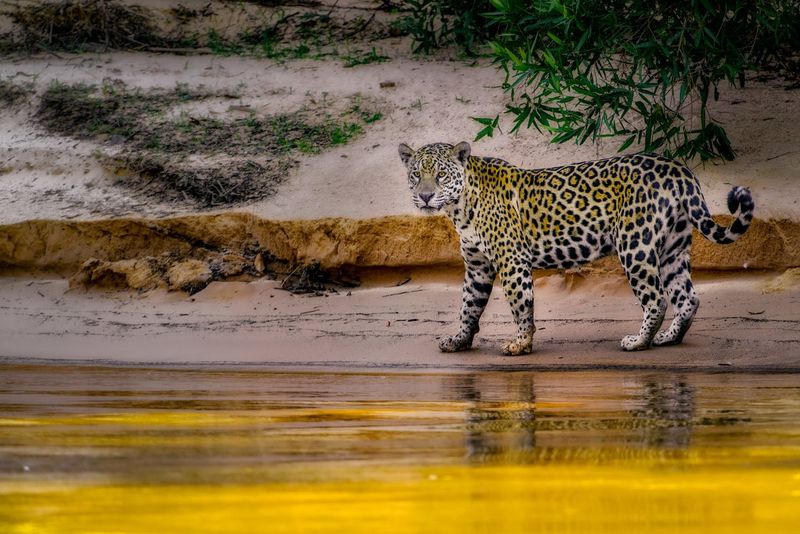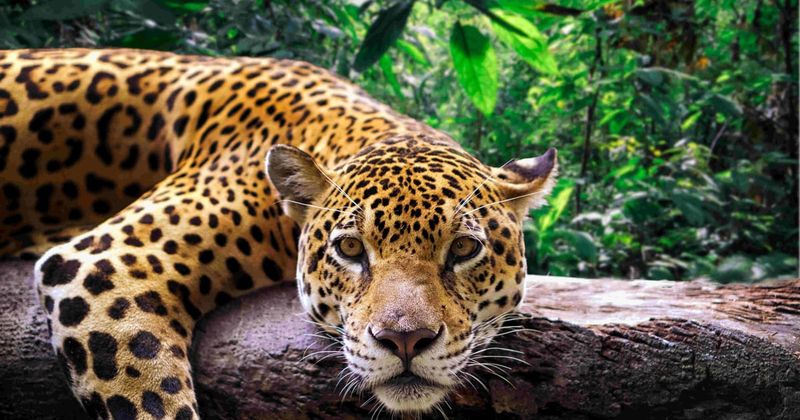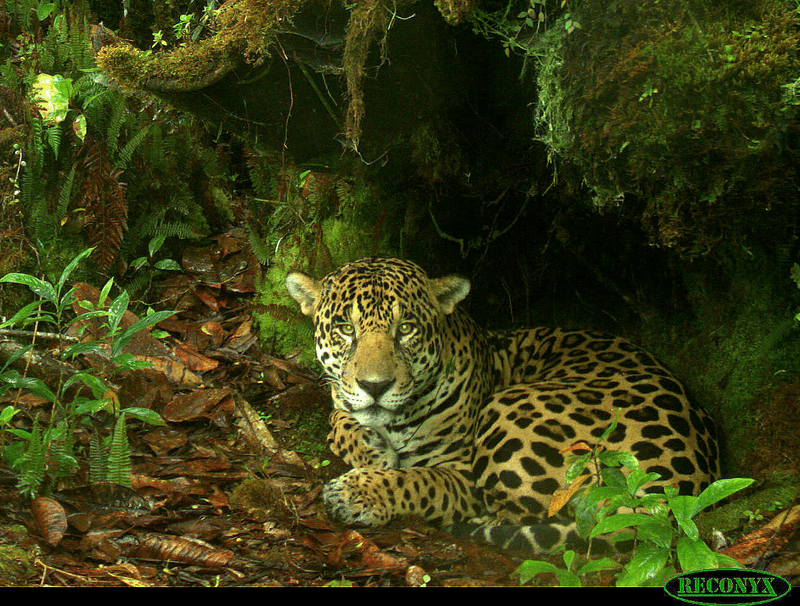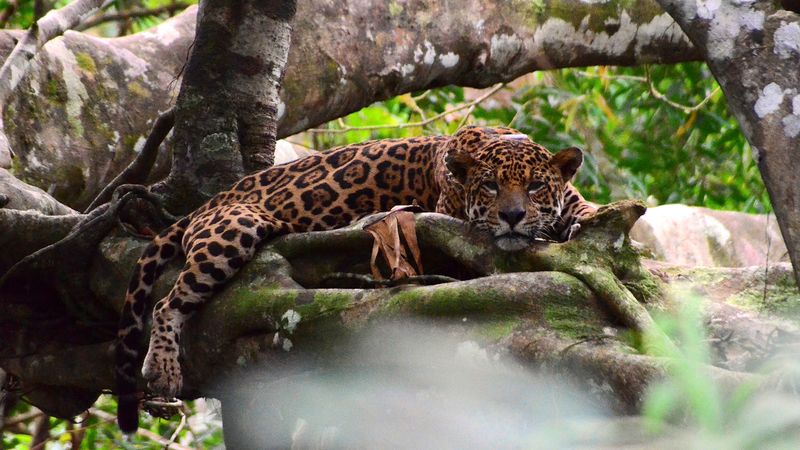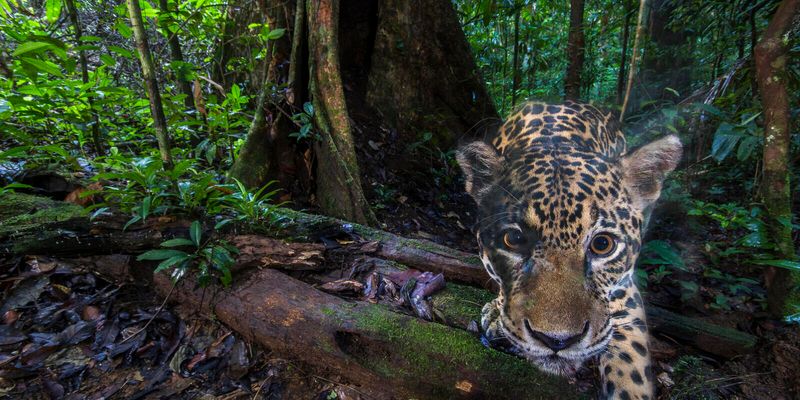📖 Table of Content:
Big cats, particularly the majestic jaguar, play a crucial role in maintaining the delicate balance of the Amazon rainforest. These magnificent creatures not only regulate the population of various species but also support the overall health and diversity of the ecosystem. Their presence is vital for preventing overgrazing, ensuring biodiversity, and maintaining the intricate web of life in this lush, vibrant environment. Through their powerful presence and unique behaviors, big cats are essential caretakers of the Amazon, embodying both strength and grace in their natural habitat.
1. Apex Predators
At the top of the Amazon food chain, jaguars are formidable apex predators, regulating species populations to maintain ecological balance. Their presence prevents overpopulation of herbivores, which can lead to overgrazing and habitat degradation. Jaguars’ hunting prowess ensures a dynamic equilibrium, allowing various species to coexist harmoniously. Their role in the ecosystem is akin to nature’s own regulatory system, subtly yet effectively keeping the intricate balance in check. Without jaguars, the Amazon’s biodiversity would be at risk, showcasing their silent yet potent influence in this lush paradise.
2. Diverse Diet
Jaguars boast a diverse diet, preying on a wide array of over 85 species. This includes capybaras, peccaries, tapirs, monkeys, caimans, fish, and even aquatic creatures. Such dietary versatility is crucial for controlling prey populations and sustaining ecological stability. Their eating habits reflect their adaptability and mastery of hunting techniques. By targeting various species, jaguars contribute to the health of the ecosystem, ensuring that no single species dominates and disrupts the natural order of the rainforest. This diverse diet highlights jaguars’ role as expert ecological balancers.
3. Unique Hunting Techniques
With the strongest bite force relative to size, jaguars are unmatched hunters in the Amazon. Their ability to crush skulls and pierce turtle shells is unmatched, demonstrating their specialized hunting prowess. These techniques enable them to tackle a variety of prey, including armored reptiles. Jaguars’ hunting strategies are a testament to their evolution as apex predators, perfectly adapted to their environment. This unique ability not only ensures their survival but also plays a crucial role in maintaining the ecosystem’s balance, exemplifying nature’s ingenuity and adaptability.
4. Habitat Preference
Renowned for their swimming abilities, jaguars often reside near water bodies, seamlessly blending into riverine and wetland habitats. Their preference for such environments not only aids in hunting but also facilitates movement across their extensive territories. This adaptation allows them to access a diverse range of prey while avoiding potential threats. By thriving in these aquatic settings, jaguars contribute to the ecological richness and connectivity of the Amazon, embodying the intricate relationship between predator and environment. Their presence near water is a symbol of adaptability and survival.
5. Solitary Nature
Jaguars are solitary creatures, each adult staking claim to large territories spanning 50 to 150 square kilometers. This solitary nature limits overgrazing and encourages healthy vegetation, ultimately supporting forest health. Their territorial behavior ensures that resources are not depleted, allowing the ecosystem to flourish. By maintaining these territories, jaguars also protect the biodiversity and habitat integrity of the rainforest. Their solitary lives echo the profound influence individuals can have on their surroundings, illustrating the balance between independence and interdependence in nature.
6. Cultural Significance
In many indigenous Amazonian cultures, jaguars hold profound cultural significance as symbols of power and guardianship. Revered as the embodiment of strength and protection, these big cats are woven into the myths and traditions of local tribes. Their presence is a reminder of the close ties between culture and nature. Jaguars inspire reverence and respect, serving as cultural icons that link human communities with the natural world. This cultural connection underscores their multifaceted role in the Amazon, not just as ecological agents but as cultural symbols of resilience and harmony.
7. Conservation Status
Jaguars are classified as Near Threatened due to habitat loss, poaching, and conflicts with humans. Their declining numbers highlight urgent conservation needs to preserve these majestic creatures and their habitats. Conservation efforts focus on protecting forests and creating corridors to support their roaming needs. Addressing threats requires a multifaceted approach involving local communities, governments, and international organizations. Preserving jaguars is not just about saving a species but about maintaining the ecological fabric of the Amazon rainforest, ensuring it thrives for generations to come.
8. Adaptability
Remarkably adaptable, jaguars navigate the Amazon’s seasonal floods by taking refuge in treetops. This adaptability allows them to survive and thrive despite environmental changes, showcasing their resilience. Such behavior highlights their ability to adjust to diverse challenges, from hunting to habitat shifts. Jaguars’ adaptability is emblematic of the dynamic nature of ecosystems, where survival hinges on the capacity to change. Their presence and adaptability ensure their continued role in the ecosystem’s balance, demonstrating nature’s remarkable ability to adapt and endure.
9. Keystone Species
Jaguars are keystone species, pivotal in maintaining the ecological balance of the Amazon. By controlling populations of other animals, they prevent overgrazing and support biodiversity. Their role is integral to the health of the forest, as their actions influence the structure and diversity of the ecosystem. Jaguars ensure that no single species becomes overdominant, thereby aiding in the preservation of ecological harmony. This essential function underscores the interconnectedness of life in the rainforest, where every species plays a vital part in the overall balance.
10. Ecological Corridors
Establishing ecological corridors is crucial for jaguar conservation, ensuring they have space to roam and thrive. These corridors connect fragmented habitats, allowing jaguars to find mates, hunt, and maintain their territories. Conservationists are working tirelessly to create and protect these pathways, recognizing their importance for both jaguars and the broader ecosystem. By linking habitats, corridors help maintain genetic diversity and reduce human-wildlife conflicts. This strategic approach exemplifies proactive conservation, aimed at securing a future where jaguars continue to play their vital role in the Amazon’s ecological balance.
